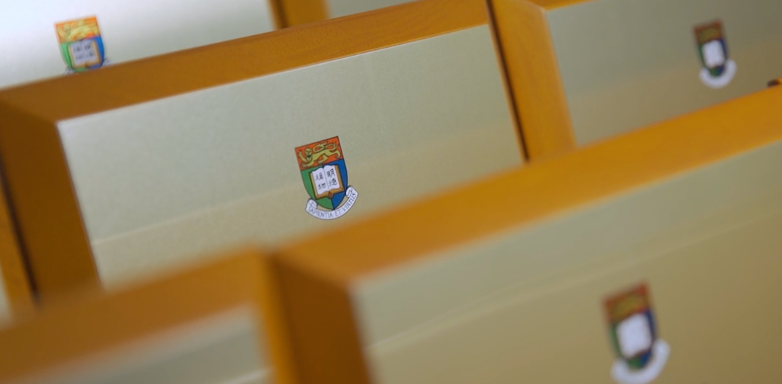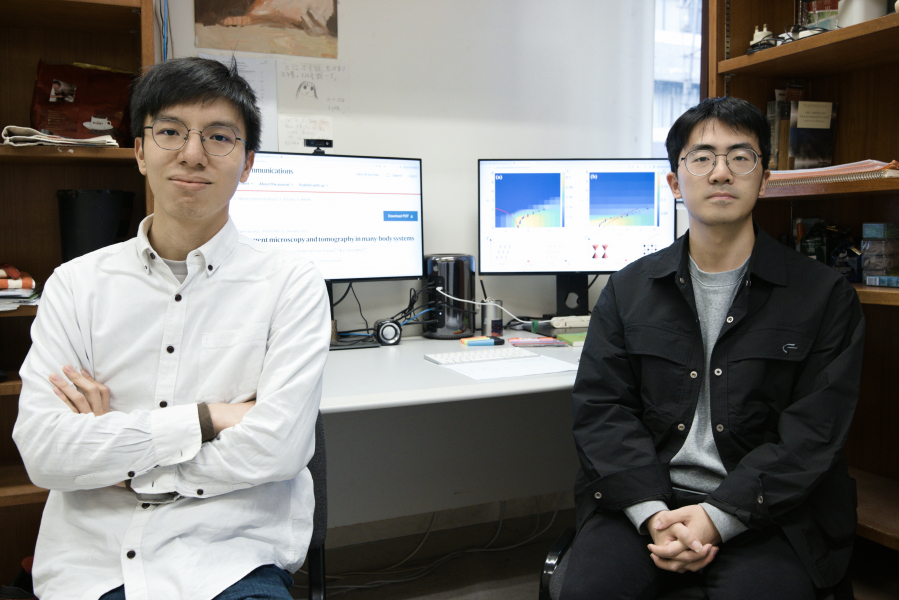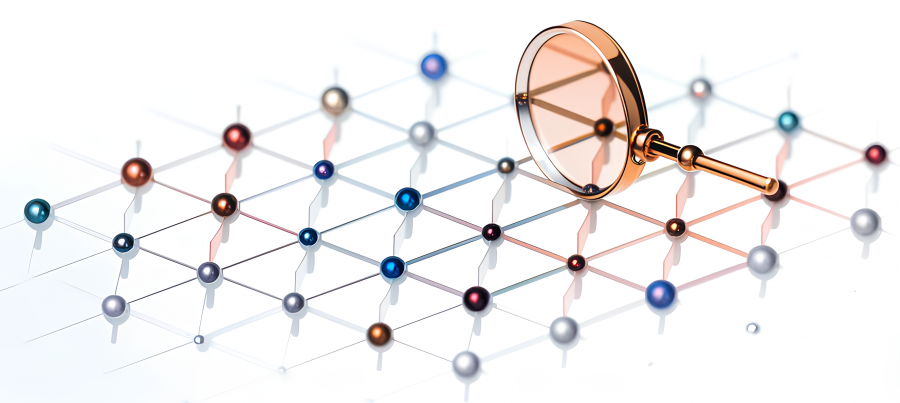

{{'Newsletter' | t}}
HKU Physicists Uncover the Hidden Structures of Quantum Matter

PhD students from the HKU Department of Physics Ting-Tung Wang (left) and Menghan Song (right) are co-authors of the journal paper.
A research team from the Department of Physics at HKU and their collaborators have recently developed a novel algorithm in quantum physics known as ‘entanglement microscopy’ that enables the visualisation and mapping of this extraordinary phenomenon at a microscopic scale. By zooming in on the intricate interactions of entangled particles, the hidden structures of quantum matter can be uncovered, revealing insights that could transform technology and deepen the understanding of the Universe.
This study—led by Professor Zi Yang Meng and co-authored by his PhD students Ting-Tung Wang and Menghan Song of the HKU Department of Physics, in collaboration with Professor William Witczak-Krempa and PhD student Liuke Lyu from the University of Montreal—unveils the hidden structures of quantum entanglement in many-body systems, offering a fresh perspective on the behaviour of quantum matter.

Conceptual picture of ‘entanglement microscopy’
This breakthrough has significant implications for advancing quantum technologies. By providing a clearer understanding of entanglement, it could help optimise quantum computing hardware and algorithms, enabling faster problem-solving in fields such as cryptography and artificial intelligence. It also opens the door to designing next-generation quantum materials with applications in energy, electronics, and superconductivity. Furthermore, this tool could deepen our understanding of fundamental physics and improve quantum simulations in chemistry and biology.
Their findings have been published in the prestigious journal Nature Communications. The full paper can be accessed at https://rdcu.be/d5oSa.
(This article is adapted from https://hku.hk/press/press-releases/detail/28079.html)
